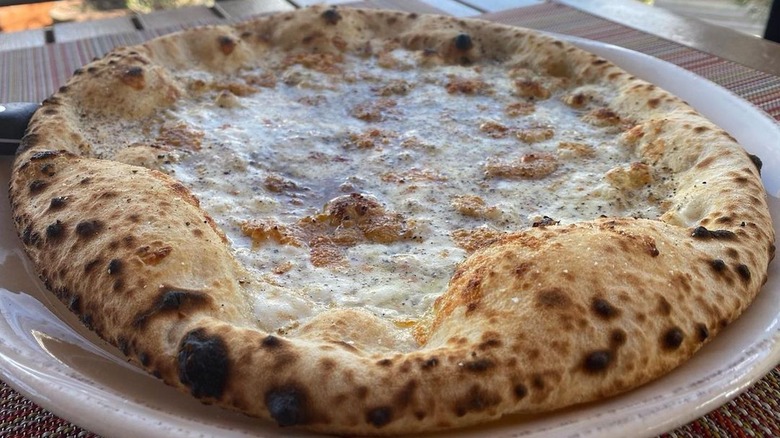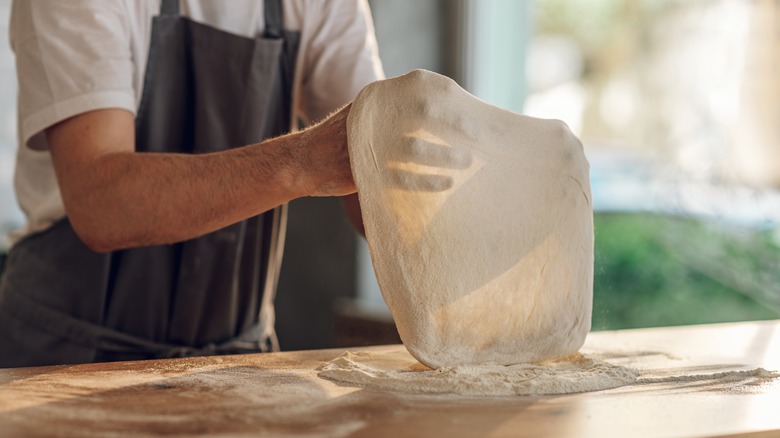The Ice Cube Technique For Creamy Cacio E Pepe Pizza
Those of us who long ago had our option to order off the children's menu revoked sometimes stare longingly at the buttery noodles and pizza being enjoyed by young diners. When a hankering for simple food hits, there is a grown-up version that combines two beloved childhood classics and enhances them with a unique cooking trick.
Cacio e pepe pasta, the grown-up twist on buttery noodles, is a simple dish that combines bucatini pasta, a hefty amount of grated Parmesan cheese, and fresh cracked pepper. It's been having a moment over the past few years, and although some feel it's overhyped, there's no denying its uncomplicated deliciousness. Despite its easy nature, cacio e pepe can pose a challenge when it comes to achieving a perfectly creamy pan sauce with so few ingredients.
The final moments of a pan sauce are make or break, and high temperatures, overcooking, or too much fat can cause it to come apart. Whisking an ice cube into a broken sauce is a traditional fix used to re-solidify the fats in oil and cream, emulsify them again, and turn the sauce back into the velvety version you originally envisioned. Cacio e pepe uses starchy pasta water to create its signature sauce, but if it isn't coming together and you want to avoid making pasta soup, try throwing an ice cube in the pan to create the creamy sauce that satisfies your inner child.
A cool method for a hot pizza
Forget scarfing down kid's menu leftovers while the children are sleeping, and make a meal fit for an adult palate that elevates the simple yet delicious flavors of cacio e pepe and pizza. Chef Stefano Callegari ices out the competition with the unique presentations and creative methods he uses to make pizza at his New York City eatery Trapizzino.
A recipe that Callegari shared with CBS News calls for a few ice cubes to be placed in the center of stretched pizza dough before it goes into a hot oven. As the ice melts on the baking pizza, a shallow well of water is created while the surrounding dough develops a dark golden crust kept moist by the evaporating water. Once it's baked, the pizza gets an olive oil drizzle followed by a heavy-handed sprinkle of Pecorino Romano cheese mixed with black pepper.
The final result is a tender pizza that soaks up the sharp, nutty flavors of Pecorino Romano and the piquant kick of black pepper. The delicate center of the pizza, where the ice cubes melted, now holds a light creamy sauce created by the olive oil and melting cheese, boasting all the flavors of cacio e pepe.

